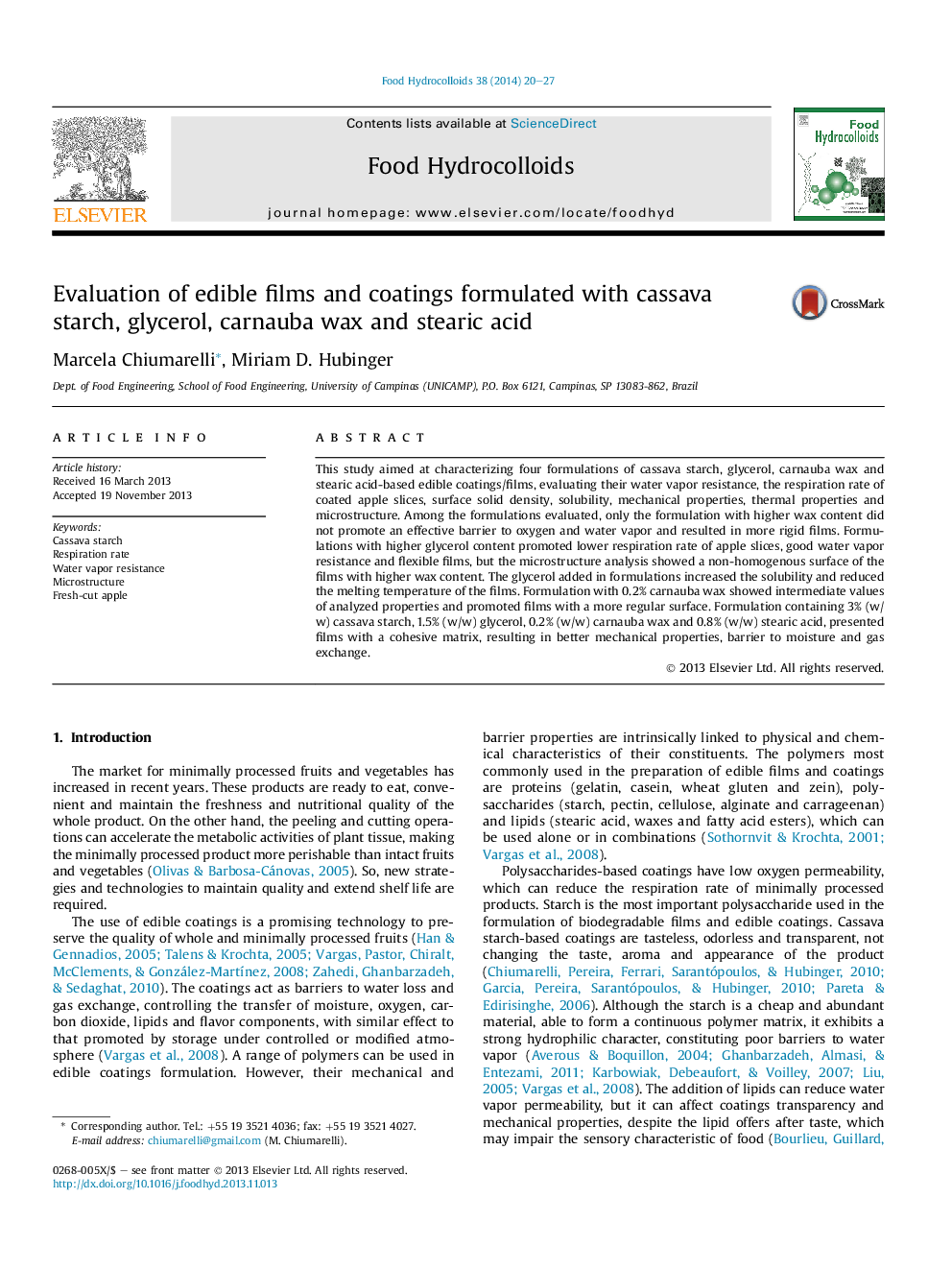| Article ID | Journal | Published Year | Pages | File Type |
|---|---|---|---|---|
| 604492 | Food Hydrocolloids | 2014 | 8 Pages |
•4 Coating formulations for fresh-cut products were selected from a previous work.•Coatings contained cassava starch, glycerol, carnauba wax and stearic acid.•Microstructure, barrier, mechanical and thermal properties were evaluated.•Coatings with higher lipid content showed unsatisfactory results and glycerol affected film properties.•Formulation with intermediary lipid and starch contents presented good responses.
This study aimed at characterizing four formulations of cassava starch, glycerol, carnauba wax and stearic acid-based edible coatings/films, evaluating their water vapor resistance, the respiration rate of coated apple slices, surface solid density, solubility, mechanical properties, thermal properties and microstructure. Among the formulations evaluated, only the formulation with higher wax content did not promote an effective barrier to oxygen and water vapor and resulted in more rigid films. Formulations with higher glycerol content promoted lower respiration rate of apple slices, good water vapor resistance and flexible films, but the microstructure analysis showed a non-homogenous surface of the films with higher wax content. The glycerol added in formulations increased the solubility and reduced the melting temperature of the films. Formulation with 0.2% carnauba wax showed intermediate values of analyzed properties and promoted films with a more regular surface. Formulation containing 3% (w/w) cassava starch, 1.5% (w/w) glycerol, 0.2% (w/w) carnauba wax and 0.8% (w/w) stearic acid, presented films with a cohesive matrix, resulting in better mechanical properties, barrier to moisture and gas exchange.
Graphical abstractFigure optionsDownload full-size imageDownload as PowerPoint slide
